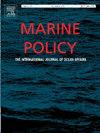The extent of destructive fishing gear use in Bangladesh: Ecological impacts and strategic roadmap for sustainable fisheries management
IF 3.7
2区 社会学
Q2 ENVIRONMENTAL STUDIES
引用次数: 0
Abstract
Worldwide, Bangladesh is ranked second in inland capture fisheries production due to its extensive water networks but lately a slowdown in catch has occurred, largely due to the widespread use of destructive fishing gear. In this study, we employed a content analysis to extensively review printed and online newspaper articles reporting on the use of destructive fishing gears and methods and their impacts over the past decade (2014–2024). To validate the gathered data, direct observations, key informant interviews, and focus group discussions were applied. The findings revealed the widespread use of five common destructive fishing methods (different types of nets, electric fishing, and application of chemicals) across the country. A total of 60 fish species and 6 crustaceans were documented as being caught by destructive methods. Among the fish species captured using destructive methods, approximately 26 % are classified as threatened, falling into categories such as vulnerable, endangered, or critically endangered. Destructive fishing gears not only endanger target fish species but also disrupt fish eggs, fry and juveniles, as well as several non-target species, including mammals, waterfowl and various vertebrates, and they may also pose health risks to humans. Addressing these impacts necessitates a strategic roadmap that includes enforcement of existing regulations, a robust policy framework, implementation of science-based management practices, and active engagement of stakeholders to raise awareness and promote sustainable alternatives.
孟加拉国破坏性渔具的使用程度:生态影响和可持续渔业管理的战略路线图
在世界范围内,由于其广泛的水网,孟加拉国在内陆捕捞渔业产量方面排名第二,但最近捕捞量有所放缓,主要是由于广泛使用破坏性渔具。在这项研究中,我们采用了内容分析,广泛审查了过去十年(2014-2024年)关于使用破坏性渔具和方法及其影响的印刷和在线报纸文章。为了验证收集到的数据,采用了直接观察、关键信息提供者访谈和焦点小组讨论。调查结果显示,五种常见的破坏性捕鱼方法(不同类型的渔网、电动捕鱼和使用化学品)在全国范围内广泛使用。共有60种鱼类和6种甲壳类动物被记录为用破坏性方法捕获。在使用破坏性方法捕获的鱼类中,约26% %被列为受威胁,分为易危、濒危或极度濒危等类别。破坏性渔具不仅危及目标鱼种,而且破坏鱼卵、鱼苗和幼鱼,以及一些非目标鱼种,包括哺乳动物、水禽和各种脊椎动物,还可能对人类构成健康风险。解决这些影响需要一个战略路线图,其中包括执行现有法规、健全的政策框架、实施基于科学的管理实践,以及利益相关者的积极参与,以提高认识并促进可持续的替代方案。
本文章由计算机程序翻译,如有差异,请以英文原文为准。
求助全文
约1分钟内获得全文
求助全文
来源期刊

Marine Policy
Multiple-
CiteScore
7.60
自引率
13.20%
发文量
428
期刊介绍:
Marine Policy is the leading journal of ocean policy studies. It offers researchers, analysts and policy makers a unique combination of analyses in the principal social science disciplines relevant to the formulation of marine policy. Major articles are contributed by specialists in marine affairs, including marine economists and marine resource managers, political scientists, marine scientists, international lawyers, geographers and anthropologists. Drawing on their expertise and research, the journal covers: international, regional and national marine policies; institutional arrangements for the management and regulation of marine activities, including fisheries and shipping; conflict resolution; marine pollution and environment; conservation and use of marine resources. Regular features of Marine Policy include research reports, conference reports and reports on current developments to keep readers up-to-date with the latest developments and research in ocean affairs.
 求助内容:
求助内容: 应助结果提醒方式:
应助结果提醒方式:


